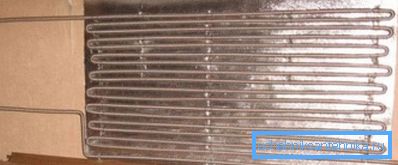Corrugated stainless steel pipes for heating: the advantages
Stainless corrugated pipe for heating began to be used relatively recently, although the plumbing has already managed to gain a well-deserved popularity. Unique technical characteristics give it numerous advantages over products from other materials. In this article we will take a closer look at them, as well as consider the main features of the installation work.

Specifications
Of course, any products have both positive and negative sides, but in this case there are much more advantages. We will start with them:
Merits
- Extensive range of exposure of possible temperatures and pressures:
| Parameter | Value |
| Normal for full pressure | 15 atmospheres |
| Safe pressure limit for system | 50 atmospheres |
| Critical pressure causing destruction | 210 atmospheres |
| Operating temperature range | From -50 to +110 degrees Celsius |
You should know: the temperature limit of 110 degrees Celsius is very conditional, and is provided mainly for the safety of sealing gaskets and couplings for pipes. For a stainless steel, the negative effects are felt only in the case of overcoming the 800 degree mark.
- Wide scope:
- Distribution radiator and water heating systems.
- Arrangement of "warm floors".
- Installation of gas and water pipelines.

- Arrangement of fire extinguishing systems, air conditioning, heat exchangers and channels for electrical wiring.
- Lack of exposure to corrosive processes.
- Chemical inertness to other types of metal. This means that if, for example, copper or aluminum pipes are installed in a neighboring apartment, there will be no harmful consequences.
- High strength, allowing to carry tangible mechanical loads.
- Easy to do the installation work by hand. With proper skill, the assembly time for a single connection does not exceed one minute, and you only need a couple of tools for this:
| Tool name | Purpose |
| Adjustable wrench | Tightening the threaded connections |
| Hacksaw | Cutting the pipe into pieces of the desired length |
Tip: as a cutting tool, it is recommended to use a specially designed cutter. Although its acquisition will entail additional costs, it will considerably facilitate and speed up the workflow.

- Excellent flexibility. The minimum allowable bending radius corresponds to the cross section of the product, which makes it possible to carry out pipe laying as rationally as possible.

- Practically unlimited operating period, which is not affected by temperature changes in the coolant.
disadvantages
The negative sides, as we have already mentioned above, are also present, albeit in small quantities:
- Specific appearance. The corrugation does not have a smooth surface that many may not seem aesthetic enough.

Tip: if you use a hidden or underground installation method, then this drawback becomes completely irrelevant.
- Relatively high price. The running meter of a branded product is not cheap, but it also has the corresponding quality, which will bring you significant savings and confidence in the future.

Installation
Corrugated stainless steel pipes for heating are subject to the same installation rules as are used when installing heating systems made from other materials. But the ways to connect their elements have their own characteristics, which should be given special attention:
Component assembly

Instruction:
- We cut the product according to the markup using a pipe cutter.
- In one hand, take the coupler, and in the other cut edge of the pipe.
- We put the fitting tightly on the product.

- Tighten the nut on the coupling with a wrench, as a result, the gasket tightly crimp the junction, and the corrugation guarantees it reliability.

Installation rules
There are a few other nuances that should be observed during the construction of the heating system using corrugated stainless steel pipes:
- Be careful with trimmed edges, as they are incredibly sharp, and you can easily cut yourself.

- During the installation of a warm floor system, the length of one circuit should not exceed the length of one pipe coil.
- If you connect the corrugation to the old elements of the steel structure, be sure to worry about installing a special filter to prevent rust in the new pipeline.
- Do not overuse the frequent cycles of bending of the corrugated pipe in the same place, this can lead to the appearance of a break.
- Remember that stainless steel is a conductor of electrical current, so take care to sufficiently remove the structure from its sources.
- Use only plastic, non-ferrous or stainless steel fasteners.

- Try not to come into contact with rusty iron when using corrugations. This significantly extends its operational life.
Conclusion
Corrugated stainless steel pipes have many unique advantages that make them every day more and more popular in the laying of heating systems. They are quite flexible, like plastic, but do not have as stringent temperature limits, as strong as steel, but not subject to corrosion. (See also the article Distribution of heating pipes: features.)
Their installation is incredibly simple due to the use of crimping couplings, and the durability with proper operation reaches many decades.

The video in this article will provide you with additional information directly related to the materials presented.